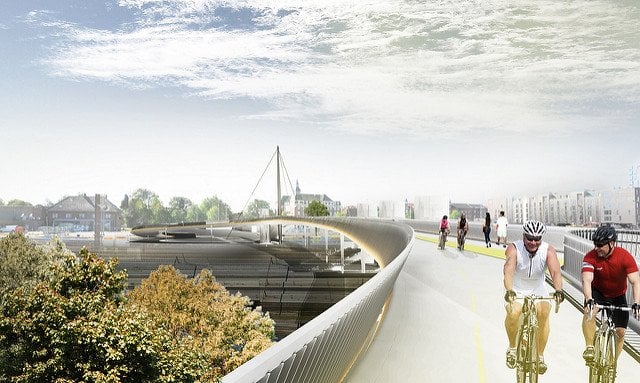
Tomorrow is good.
 In a weekly column, alternately written by Lucien Engelen, Maarten Steinbuch, Carlo van de Weijer and Daan Kersten, E52 tries to find out what the future will look like. All four contributors are – in addition to their ‘normal’ groundbreaking work – linked to the SingularityU The Netherlands, the organization that focuses on spreading knowledge about technologies that can provide solutions to the problems of our time. This Sunday, we have a stand-in.
In a weekly column, alternately written by Lucien Engelen, Maarten Steinbuch, Carlo van de Weijer and Daan Kersten, E52 tries to find out what the future will look like. All four contributors are – in addition to their ‘normal’ groundbreaking work – linked to the SingularityU The Netherlands, the organization that focuses on spreading knowledge about technologies that can provide solutions to the problems of our time. This Sunday, we have a stand-in.
By Bart Brouwers
In the early seventies, during a vacation in Denmark, my parents dragged me not only to Legoland (yes!), but also to the city of Odense (mwah!). They must have thought that every child just had to see the birthplace of Hans Christian Andersen. Well, not me. It was boring. And frankly, this whole city of Odense didn’t strike me as very exciting.
And yet, right now exactly this city is very high on my wish list. Here’s why: if there is one city in the world, which has incorporated the promotion of using bicycles consistently into its policy, then it’s Odense. And indeed, this means that cars and trucks had to make way.
Odense seems to do a much better job of turning words into bike paths.
In population, Odense is similar to Eindhoven (the Danish town is slightly smaller, with nearly 200,000 inhabitants), but Odense seems to do a much better job of turning words into bike paths. The big goal – fresh air for all visitors and inhabitants – is getting closer every year. What also interests me is whether all this had an effect on the business of the retailers. Because that’s always the first reflex of those involved: if cars can no longer park right in front of the store, what sort of activity will still remain in the inner city?
It’s exactly that question that came up time and again after the city council decided to turn the Vestdijk into a bicycle street. Fortunately, this didn’t bring the alderman from her mission. To be honest, she had no other choice, because of the Government subsidy which was attached to the timely implementation of the plans. Shortly, motorists will have a difficult time on the Vestdijk. For the benefit of retailers the Heuvel parking garage will remain accessible from all sides, but driving from Stratum straight to the railway station or Woensel won’t be possible anymore.
A step forward for fresh air, who wouldn’t want that? But still, reactions like these speak for themselvces:
“Pure madness, these plans. The whole city center will be locked and nobody will be able to go downtown. More shops will go bankrupt. Thanks to this leftist city council and those environmental activists. Yuck.”
Actually, I think the opposite is true. The fact that the car became the obvious vehicle for city people, does not mean that it is the most convenient. Amsterdam has already shown that the shore can also turn the ship: Too many cars on a small piece of land brings many people to choose an alternative. But apart from that, there is something more important: fresh air, a safer environment, a greener city: these are all aspects that improve the attractiveness of a town – and going shopping in one. And to be clear: the pursuit of an exhaust-free town has absolutely nothing to do with a left or right administration, because every person wants healthy lungs and preferably a longer life as well.
There is still much to be desired in Eindhoven. For one thing, it’s quite difficult to understand that together with the decision to change the Vestdijk into a low traffic street, the speed limit on the ‘Rondweg’ was increased to 70. In this way we create a kind of procession of Echternach when it comes to clean air.
So off to Odense. And while I’m at it, I will take a quick look to see if my memory is still right about the birthplace of Hans Christian. After that, I’ll take all the valuable lessons back to Eindhoven. Because yesterday was really nice, but perhaps Odense can help us to make tomorrow even better.

